Of the three macro-nutrients that comprise whole foods – carbohydrates, protein, and fat – it is carbohydrates that seem to get the greatest lashing and are surrounded by the most confusion. Are carbs good to eat or best avoided? Well, both! It totally depends on what kind of carbohydrates you eat. All carbohydrates can not be logically or nutritionally lumped into one category.
There are three basic groups of carbohydrates all formed from carbon, hydrogen, and oxygen in different configurations:
1. Sugar – simple carbs that include sucrose (refined table sugar), fructose (in fruit), lactose (in milk), and glucose (simple sugar that forms cellulose and starch). These sugars are “fast carbs” because they break down easily and quickly in the body providing immediate fuel.
2. Cellulose – complex carbs made from chains of glucose, bonded by indigestible links. Found in the cell walls of plants, cellulose can not be digested for cellular fuel by humans, but it does provide beneficial dietary fiber.
3. Starch – complex carbs made from long-branching chains of glucose molecules and referred to as complex carbohydrates. Starches are “slow carbs” because they break down into simple sugars slowly providing sustained fuel and satiation.
The cells of the brain and body need glucose for fuel. The easiest and fastest way to get glucose is from whole carbs, especially raw fruit. The next best way is from whole cooked starches such as grains, legumes, and tubers. Converting proteins and fats into glucose is possible, but the process is very energy-demanding on the body and is a much slower process. If an adequate amount of carbohydrates are not consumed, the body falls into a survival-state of ketosis (a metabolic process that occurs when the body does not have enough glucose for fuel) which is unnecessarily stressful on the body and unsustainable. (more on ketosis)
Physicians like Dr. John McDougall promote a high-starch diet because it is a clean, slow burning fuel with a small amount of fat and an insignificant amount of cholesterol. Cultures around the globe have survived on starch-based diets for centuries eating rice and beans, corn, or potatoes. Consumption of unrefined, cooked starches fuel and nourish the body with protein, essential fatty acids, vitamins, minerals, calories, and insoluble fiber.
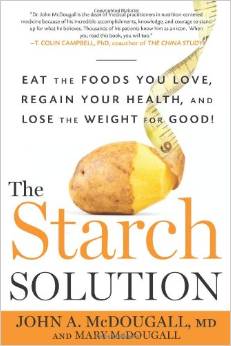
The Starch Solution: Eat the Foods You Love, Regain Your Health, and Lose the Weight for Good!
Starch grains are amaranth, barley, brown rice, bulgar, buckwheat, corn, farro, kasha, kamut, millet, oats, rice, rye, sorghum, spelt, teff, triticale, wheat, wheat berries, and wild rice. Quinoa is a starchy seed that eats like a grain and has a higher fat content than grains.
Grains are the starchy seeds of plants. You know you have chosen a whole grain when you can see the original shape of the grain. Whole grain foods include all three parts and must be consumed naturally intact for full nutritional benefit:
1. Bran – forms the outer layer of the seed and contains fiber, B vitamins, minerals (magnesium, phosphorus, iron, zinc, selenium, copper) and phytochemicals;
2. Endosperm – is the kernel and bulk of the seed containing complex carbohydrates, protein and B vitamins;
3. Germ – produces the sprout and contains B vitamins (niacin, thiamin, riboflavin), vitamin E, minerals, unsaturated fats, phytochemicals and antioxidants. (source)
Refined carbohydrate starches are best avoided: flour, crackers, cookies, cakes, pies, muffins, most breads, corn flakes, crusts, couscous, cream of wheat or rice, crisped rice, degermed cornmeal, enriched macaroni or spaghetti, most boxed cereals, grits, pretzels, puffed rice or wheat, white breads, white rice, alcohol, soda, and any other naturally or artificially sweetened drinks.
The grains used for these refined products have been stripped of their best parts. White rice, white bread, and white flour are empty calories. If choosing a bread, select only sprouted-whole grain breads. Refined grains contain only the endosperm and lose up to 80 percent of their nutrients after the bran and germ are removed. (source)
Starch vegetables, tubers, and fruits are burdock, carrots, cassava, Jerusalem artichokes, parsnips, potatoes, salsify, sweet potatoes, taro, winter squashes (acorn, banana, buttercup, butternut, Hubbard, kabocha, pumpkin), and yams.
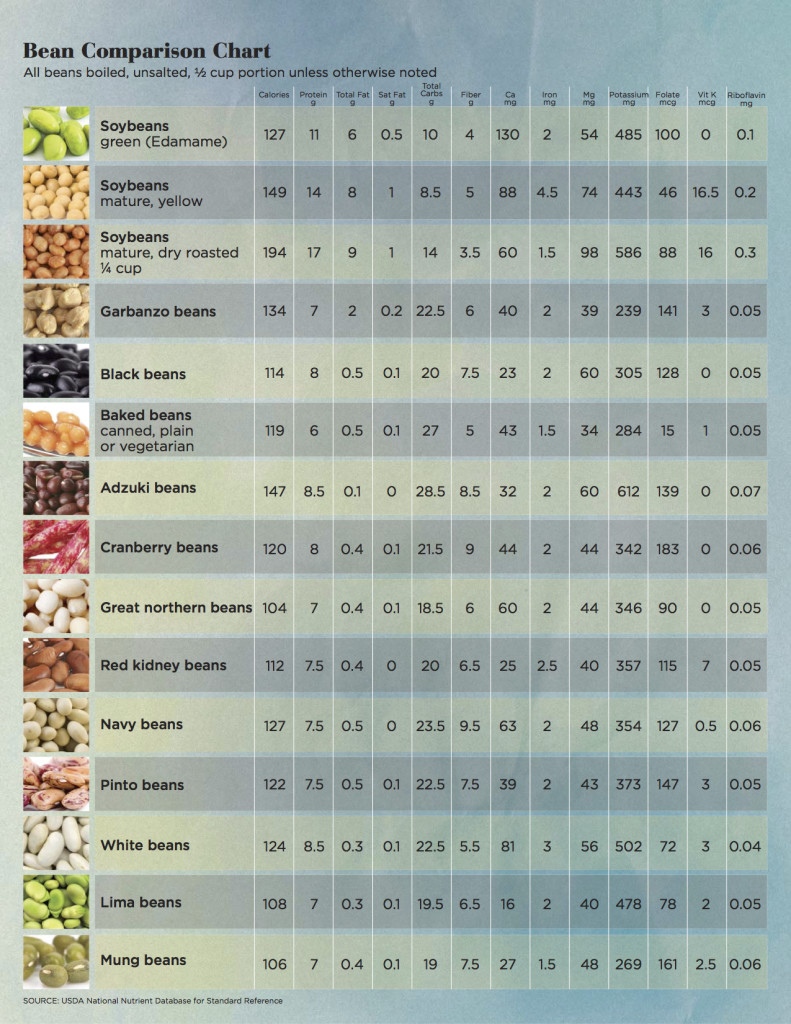
There are many starch beans, legumes, and lentils…in fact, too many to list but some of the more popular are in the image above. They are high in fiber, low in fat, and absent of cholesterol and saturated fat. According to MayoClinic.com, a cup of beans contains almost half your recommended daily fiber intake. A diet high in fiber helps maintain a healthy digestive system by relieving constipation, reducing your risk of diverticular disease, and even relieving some symptoms of irritable bowel syndrome. (source)
Meanwhile Dr. Douglas Graham teaches that grains and legumes are not ideal human foods because they can not be eaten raw and humans are not granivores. He believes that the natural foods meant for human consumption are the foods that have always been available to us and ready to eat: fruit, vegetables (tender leafy greens), nuts, and seeds. Dr. Graham teaches that our greatest nutritional needs are for water and simple carbohydrates (glucose & fructose). In fact, he believes that the consumption of cooked starches is counter-productive to optimal health because they are acid-forming, some (mainly wheat, rye and barley) contain gluten, grains have opioids which cause them to be addictive and neurotoxic, must be cooked (predigested), and lack the crucial vitamins A & C.
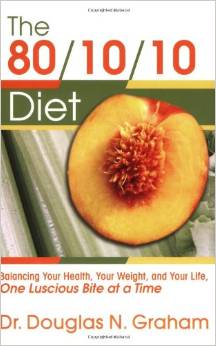 The 80/10/10 Diet
The 80/10/10 Diet
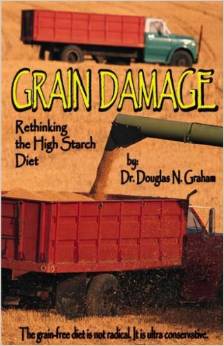 Grain Damage: Rethinking the High-Starch Diet
Grain Damage: Rethinking the High-Starch Diet
While these two plant-based doctors – McDougall & Graham – disagree on the starch issue, both of them do agree that whole plant fat must be the only fat intake and be kept to a minimum (no oil; avocados, whole nuts, and seeds occasionally) and that all animal-based consumables are to be avoided completely. Highly processed, packaged, junk, and fast foodstuffs are not to ever be considered food fit for human nutritional needs.
If you choose to cook and eat starches, fats need to be minimized for optimal health. Aiming for 80% of your calories to come from carbs, 10% from fats, and 10% from protein is a healthful goal. Learn to roast vegetables in veggie broth and learn to top baked potatoes with salsa, vegetables, or plant-based soups and stews. Dr. John McDougall’s website is full of recipes and cookbooks. Also, all the links for doctors, nutritionists, and cookbooks listed in this post are for low fat, whole food, plant-based eating. Sign up for their newsletters, peruse their websites, and follow them on social media.
Perhaps humans evolved to make fire and to farm in order to eat grains and legumes, not animals. Supplementing a purely natural diet of fruit, vegetables, nuts, and seeds with cooked starches seems reasonable for staying satiated. Eating according to Dr. Graham by day and Dr. McDougall by night might be the best of both worlds.
As we’ve learned, grains are seeds. (All this information therefore, pertains to legumes, nuts, and seeds as well.) Seeds are meant to pass through the system relatively undigested so they can be planted elsewhere (think in nature). To make it possible for seeds to pass through undigested, there are some anti-nutrients (enzyme inhibitors) built in to make them difficult to digest. Seeds also need to be preserved until the time is right for sprouting, so they have certain compounds (phytates) that stop the active enzyme activity of germination. These compounds also serve to hinder active enzyme activity in your digestive system. Beginning the sprouting process makes seeds more digestible and help your system obtain all the nutrients in the food. Soaking grains is one way to mimic the sprouting process. (source)

For specific soaking instructions (water temp, acid ingredient, room temp, and duration) consult the post here. But don’t get too much in a tangle about doing it perfectly because Dr. McDougall says “soaking, germination, boiling, cooking, and fermentation all inactivate phytic acid and free up minerals for absorption. Phytic acid actually has many beneficial health effects—you won’t want it out of your diet. It acts as a powerful antioxidant and has been shown to reduce blood sugar, insulin, cholesterol and triglycerides. Phytic acid is linked to a reduction in heart disease, diabetes, obesity, and other chronic diseases in people.” (source) Click on image below to read at full scale.
I have fairly regularly eaten avocados, sometimes one per night. I’m considering removing the avocado from my routine and replacing the calories (fuel) by increasing my intake of cooked whole starches in order to reduce my fat intake. I like the idea of eating “fast carbs” in the form of fruit to start my day and then to transition into “slow carbs” later in the day with a focus on vegetables, grains, and legumes in the evening. Whole grains are safe to mix with fruit midday for a fast/slow carb medley because they are low in fat, and fruit with fat is not recommended. Fat intake is important for overall wellbeing, but it’s way too easy to get more than 10% of daily calories from fat. I think I’ve been overdoing it with the avocados therefore I’ll be imperfectly soaking my starches and incorporating more of them into my diet to see how I feel.
Additional Resources:
• Choosing the Safest Fats, Carbs, and Proteins
• Tofu or Not Tofu: That is the Debate
• Fruit Over Forks Over Knives
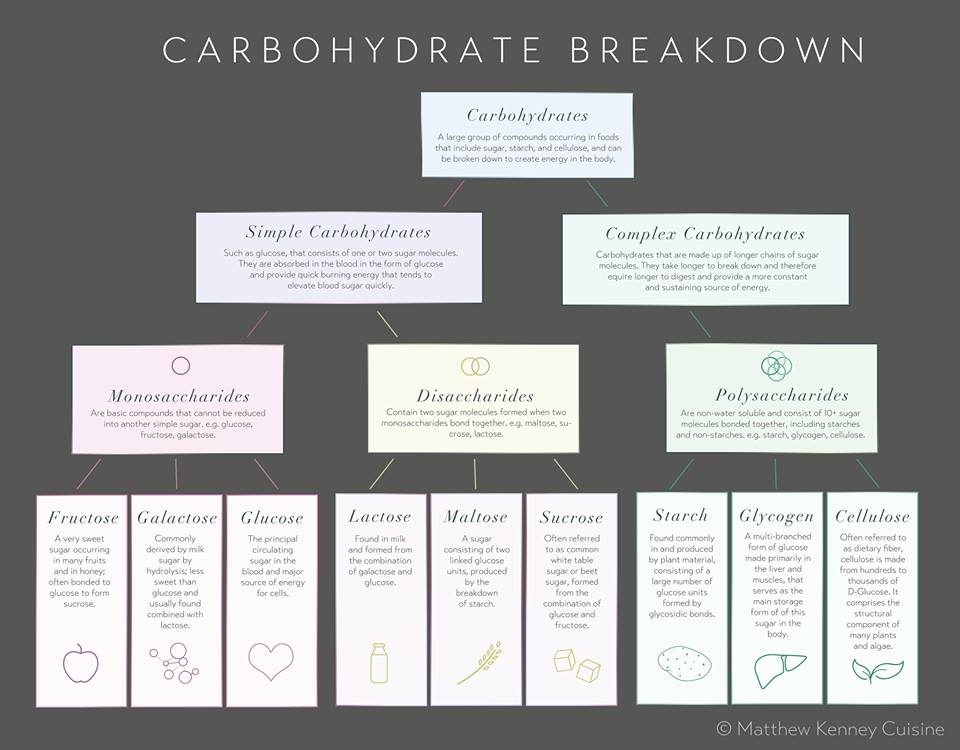
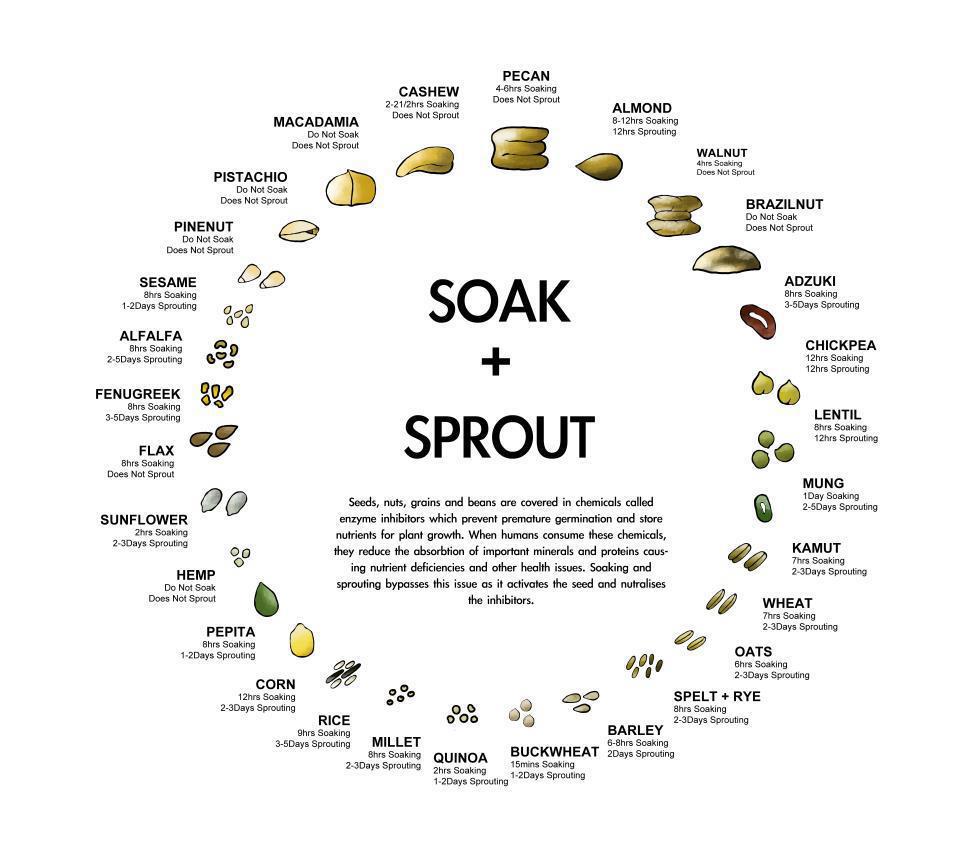

{ 12 comments… read them below or add one }
Hmm…a lot to digest in this post, pun intended 😉
I’ll be curious to hear more on how this transition goes for you.
Thank you Angie! I’m curious too!
Atrocious the % ratio of his recommended and so-called “balanced” nutrition.
80.10.10?
Dr. John MacDougall.. My God, it’s 2019! He is so far off a healthy balance that it’s unhealthy. There is a huge difference in what to recommend to clients when it comes to the client’s overall health. What we have come to learn and understand when it comes to inflammation, digestion, leaky gut, and lectins, anti-nutrients etc….Simple carbs should be at the lowest! Beans, legumes should not be the highest and consumed and only in moderation. We get the complete overall benefits from the fiber in “plant foods” Leafy greens and vegetables. He needs to begin updating himself with research and important information when it comes to “digestion” and nutrition.
Your comment is a bit challenging to follow. The 80/10/10 recommended ration is from Dr. Graham, not Dr. McDougall. Beans, legumes, and other starches are complex carbohydrates. We can agree that a variety of fruits and vegetables are beneficial for most, if not all, people.
Ever since I started this diet I included cooked complex carbs. I also learned that I need to limit their intake at any one sitting because they tend to expand the stomach. I learned that soy has a lot more fat than black beans. I eat lots of black beans late in the day- with lots of garlic- yum! So by eating smaller portions of avocado my diet will be quite low in fats. And when I cheat in a restaurant (small piece of chicken or fish) my overall fat content is low. (I have not reached the point of pure veganism- yet!)
You’re doing great Paul. I like that you wrote “yet!” ;o)
But I don’t like the idea that cooked vegs are acid forming. Doesn’t that couteract the anti-inflammatory benefits of the diet? Are there complex carbs that don’t need cooking, or that are anti-inflammatory after cooking?
Not all cooked veggies are acid-forming. If you’re talking about the cooked starchy veggies, yes, but remember it’s all on a spectrum. Cooked starchy veggies are still less acid forming than cooked meats, cooked eggs, milk, sugar, and canned food. There are many veggies – mostly green veggies – that are still alkalizing even when cooked…of course, depending on how they are cooked and in what they might be cooked (oil, etc.) Best to steam those veggies for most nutrient retention if raw is not desirable/digestible. There are several grains (complex carbs) that can be soaked and sprouted and eaten uncooked. Check out the charts on this post: https://www.carlagoldenwellness.com/2015/02/02/alkalizing-the-body-is-oxygenating-the-body/
That’s exactly the information I needed. Thank you Carla. Am I right in assuming that the ph we are talking about correlates well with inflammation, or is there something else I need to know to maximize an anti-inflammatory diet?
Inflammation is caused by toxicity from metabolism, stress, environment, and diet. Eating an alkalizing diet helps reduce inflammation by helping to remove toxic elements from the diet. This is why it is so important to eat a cleansing diet daily, not just rely on 3,5,7,or 10 day detox cleanses.
So its toxicity, not ph that effects inflamamation. I didn’t know that. Thanks again, Carla.
Acid in the tissues and system is a toxin and toxins cause inflammation. So pH and inflammation are interrelated.